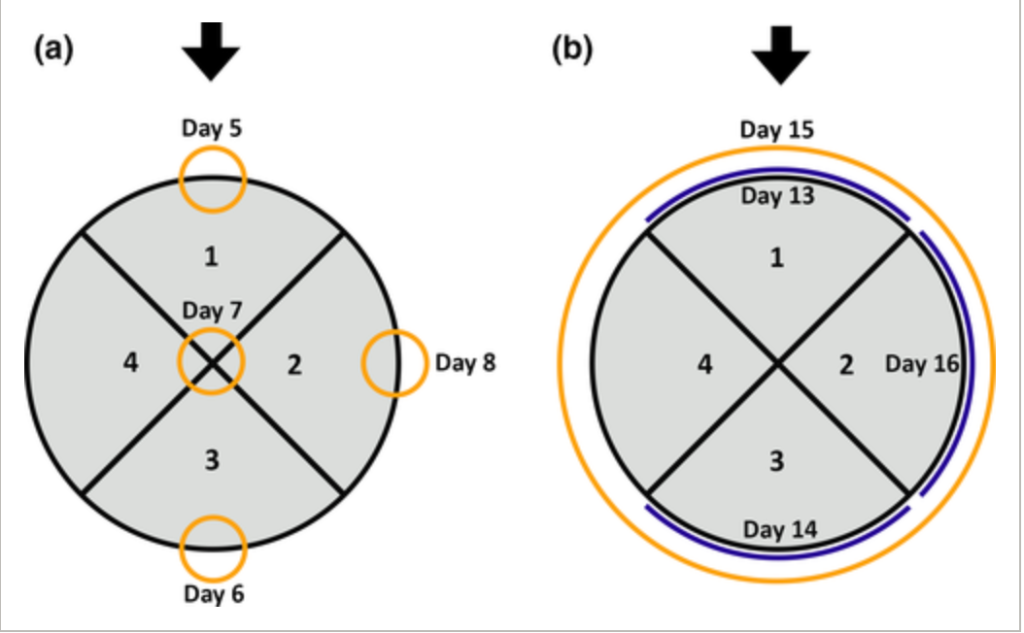Overview
The article I chose to review is “Black-tailed deer resource selection reveals some mechanisms behind the ‘luxury effect’ in urban wildlife” by Fisher et al. (2024). The study focuses on how urban deer choose where they live and feed, particularly in relation to wealthier neighborhoods. The “luxury effect” is the idea that richer areas often have more biodiversity, and this study aimed to see how that effect applies to black-tailed deer in Oak Bay, British Columbia. The authors explored whether features like big yards, green lawns, parks, and golf courses were influencing where deer spend their time.
The main goal of this study was to better understand how urban environments are providing food and shelter for deer and how that affects their movements and populations. This is important because as cities grow, interactions between people and deer are becoming more common, sometimes leading to conflicts. By figuring out what attracts deer, city planners and wildlife managers can make better decisions to balance human needs with healthy wildlife populations.
Methods
This research was conducted in Oak Bay, a wealthy neighborhood on Vancouver Island. The study area included residential neighborhoods, parks, golf courses, and the surrounding urban matrix.
Between 2018 and 2019, researchers captured 20 female black-tailed deer and fitted them with GPS collars. These collars collected location data every 13 hours, which allowed the researchers to map where the deer went throughout the year.
They then analyzed which features were most common in the locations the deer chose compared to random points across the landscape. The features they focused on were:
- Lot size (small, medium, or large yards)
- Vegetation greenness (NDVI, which measures how productive and healthy plants are)
- Tree cover
- Proximity to parks and golf courses
- Road density
They also calculated each deer’s home range size using kernel density estimation, which gave a sense of how much space each deer used over time.

Results
The results showed strong evidence for the luxury effect. Large residential lots were the most important factor as deer were over twice as likely to be found in areas with bigger yards. These large lots also tended to have more irrigated gardens and lawns, which gave deer a steady food source.
Deer also preferred areas with greener vegetation, as well as locations near parks and golf courses. These spaces offered both food and cover. Roads, on the other hand, were avoided, which suggests that traffic is still a major deterrent.
Tree cover wasn’t a big factor in whether deer used an area. Because food and water were so easy to find in Oak Bay, the deer had very small home ranges, about a quarter of the size of deer living in wild areas, meaning that the same deer were staying in the same neighborhoods for long periods of time, which could explain why residents report seeing deer frequently.

Critique and Reflection of this Article
I found this article very interesting because it shows that urban design, particularly in wealthier areas, can actually create perfect deer habitat. The authors did a great job using GPS tracking and statistical models to clearly show how lot size and vegetation greenness are influencing deer behavior.
One limitation of the study is that it only focused on female deer, so we don’t know if males are using the landscape in the same way. It also didn’t look at how deer behavior might change across seasons, which could be important for things like fawning or mating.
References
Fisher, J. T., Fuller, H. W., Hering, A., Frey, S., & Fisher, A. C. (2024). Black-tailed deer resource selection reveals some mechanisms behind the ‘luxury effect’ in urban wildlife. Urban Ecosystems, 27, 63–74. https://doi.org/10.1007/s11252-023-01428-7





